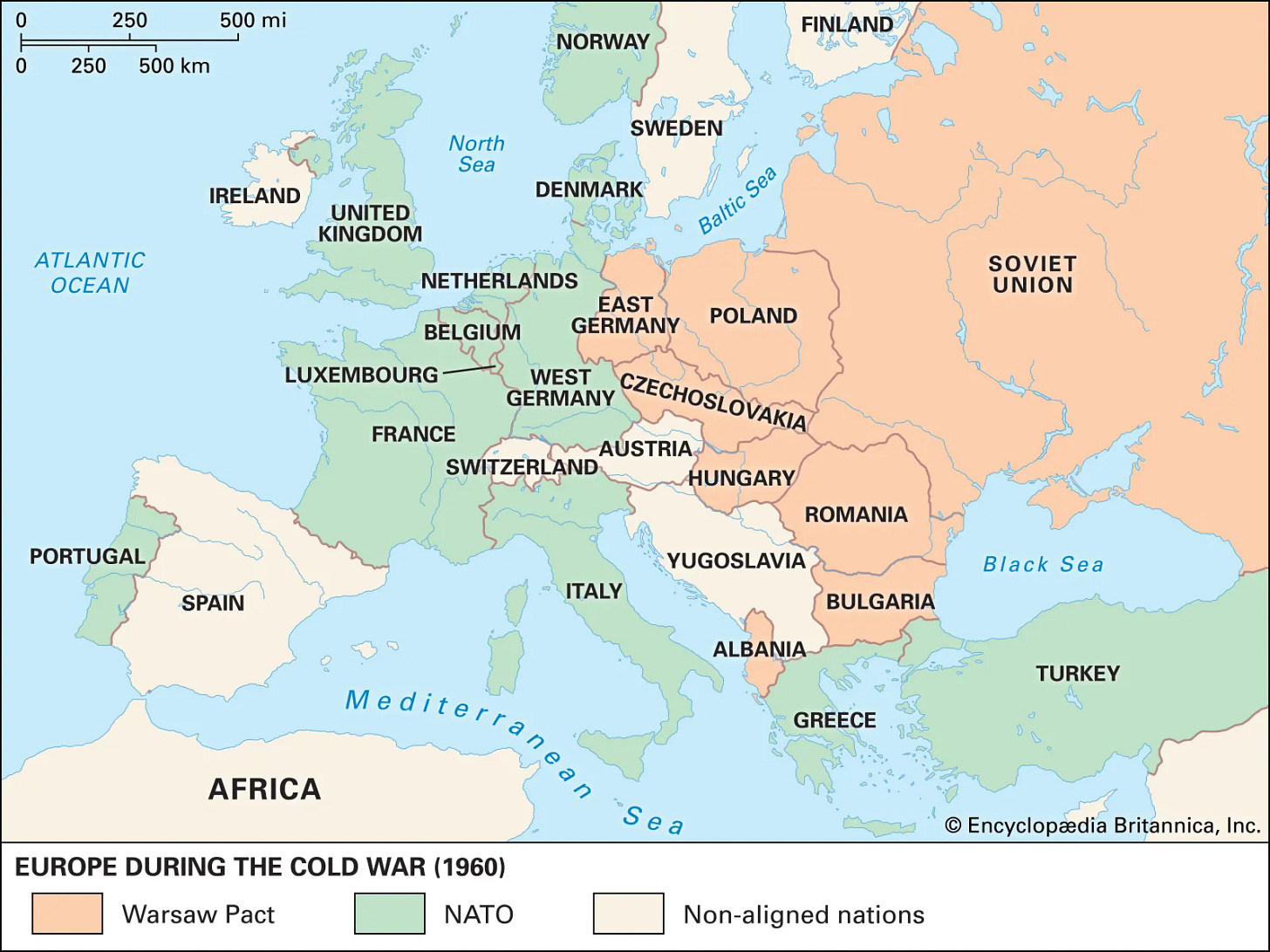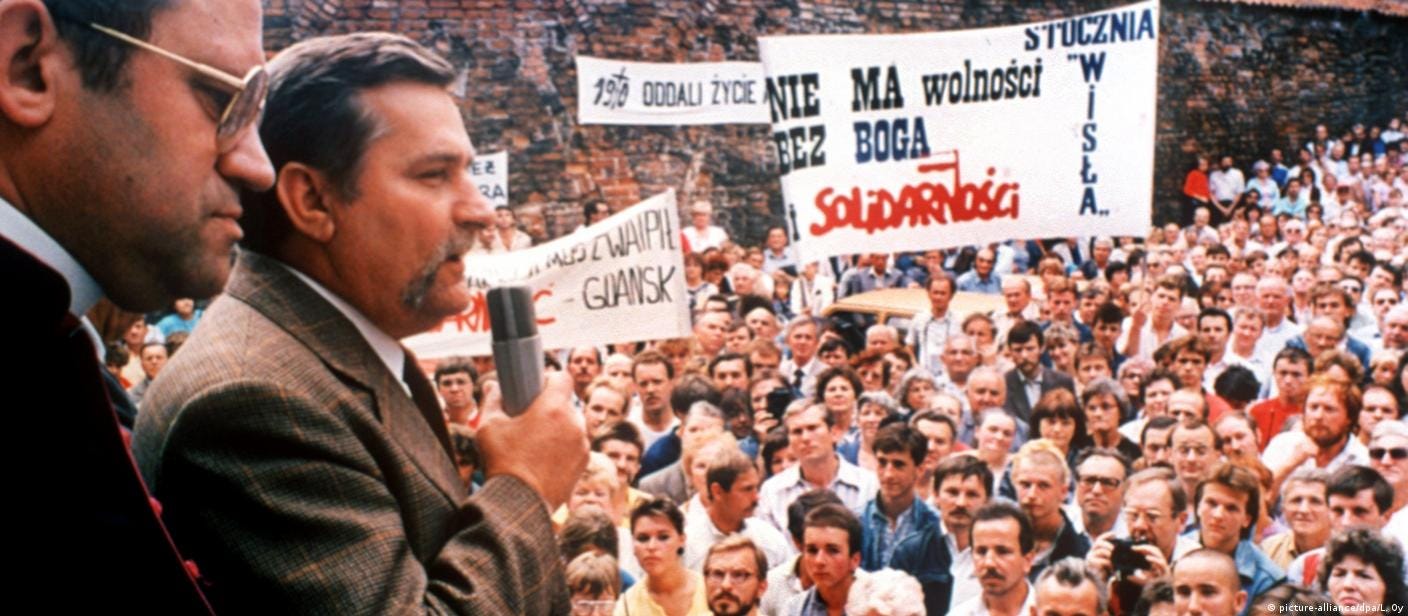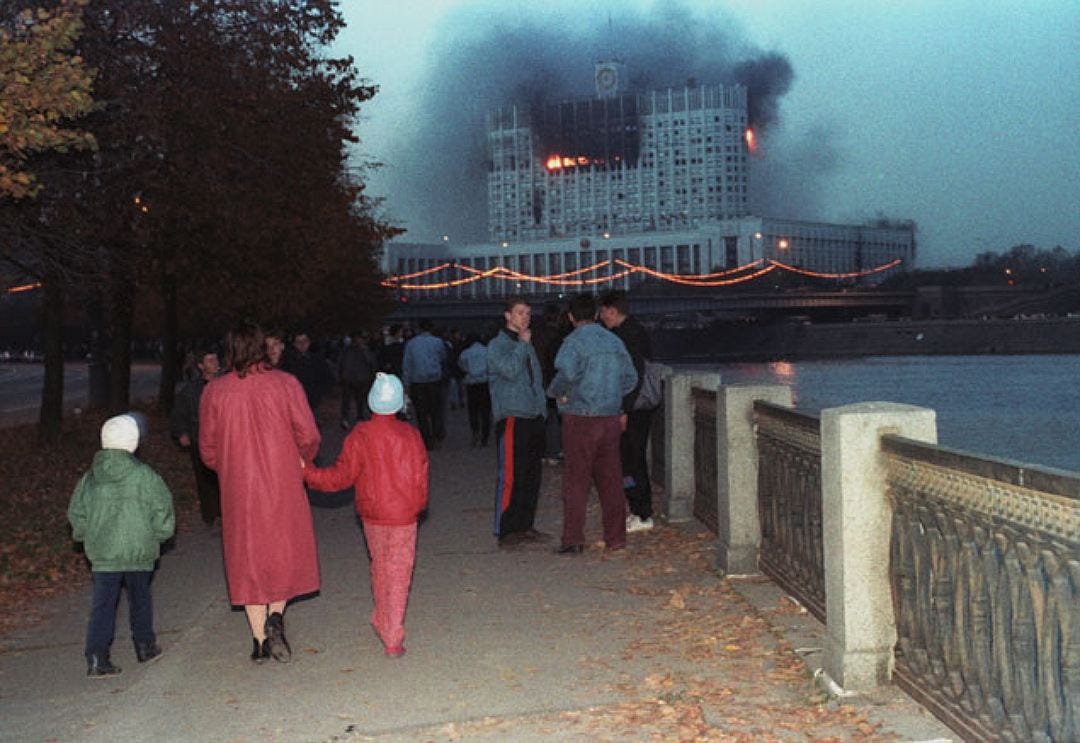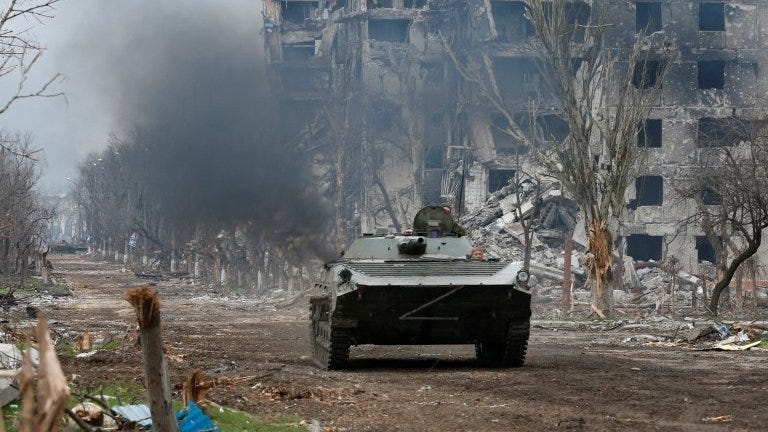It surprises me when I hear someone in their 40s who doesn’t recall the world before the fall of Communism. It shouldn’t, as nearly 2/3s of the world’s population is below 40, and the fall of communist East Europe is simply a historical fact. This
But as a person who actually did the “duck and cover” drills – albeit more for earthquakes than nuclear war – I find it difficult to understand how this can be. But it is, so let’s look at what started in 1989.
Pre-1989 Status Quo
Before the revolutions of 1989, the ideological map of Europe seemed set. From the end of World War II, for 40 years the political situation on the ground was more or less static. The Soviet Union organized the eastern part of Europe into communist countries dependent on the Soviets for military, economic, and political support. The United States, with political help from the United Kingdom, reorganized the western part of Europe into “democratic” countries dependent on the west for military, economic, and political support. A third set of buffer states, Sweden, Finland, Austria, and Yugoslavia, lie between these two powers.
Winston Churchill described the boundary between these two poles as an “Iron Curtain, " dividing the world into two camps. The two systems quickly became adversarial and organized into military alignments. Looked at from the Soviet viewpoint, the new countries provided a buffer between Russia and the various German nations, which had invaded Russia twice in 30 years and killed 27 million Russians, both military and civilians.
From the viewpoint of the West, Russia was exporting a political system that opposed freedom and, more importantly, capitalism, which was economically opposed to communism.
The two systems clashed worldwide but stabilized in Europe into a “Cold War” where animosity did not turn into physical conflicts. Both sides also recognized the sphere of influence in the regions, which allowed the USSR and USA to function freely in their spaces. For example, Russia invaded/intervened in Hungary in 1954 and in Czechoslovakia in 1968 when their governments drifted too far from the Soviet system. Likewise, the USSR stayed out of the United States intervention in Greece to drive out communists and its political intervention in Italy over the years.
The world sputtered on this way for five decades or so. The United States and the Soviet Union supported different sides and proxy actors in civil wars in China, Korea, Vietnam, Cuba, Afghanistan, and multiple countries in Africa and southern Asia. The simple list here allows us to ignore the tragic wars, deaths, and economic devastation this conflict caused.
From the West’s viewpoint, these wars and the economic pressure caused by the communist system led to disquiet and, ultimately, rejection of the Soviet System. This bankrupting of the USSR reduced its ability to support and spread the communist system. The political system first faltered in the Soviet Union itself, leading their client countries to reject the communist governments.
I cannot fully explain the reasoning from the Soviet viewpoint of why the system ended. Military and economic support emanating from Russia to its satellites was reduced, but more importantly, the support for using military force to put down political opposition drained away.
What Happened Exactly
By exactly here, I mean an overview
The first enduring political cracks in the Cold War system occurred in Poland. The communist system was ideologically based on the idea that the workers should run countries, not owners of physical wealth and power.
In Poland, a worker’s union – Solidarity – demonstrated against the existing system to demand a say in government. Solidarity gained more and more supporters for years and became a political force. In an effort to co-opt the union movement and reduce protests against the government, the Communist Party allowed free elections for 1/3 of the legislative seats, Solidarity won them all. Then something unique happened. The Polish Legislature was run by the Communist Party and a secondary party that was a puppet of the Communists. After the election and the public outcry, this puppet party threw their support to Solidarity and – poof – the end of Communist rule in a single day. This was a real danger to these legislators and the country. The Soviet Union had invaded the country before to reestablish communist rule, and there was no guarantee that it would not invade again. But the Soviet Union had a reasonable “liberal” premier and chose not to force its policies on Poland this time.
Once the loosening of restrictions occurred in Poland, both Hungary and Czechoslovakia relaxed their limits on the populace after demonstrations in those countries. Similar demonstrations also occurred in East Germany and China.
In China, the protest occurred at Tienamam Square. China’s response was tentative acceptance for a short time. After a few deadlines for the students to disperse, the Chinese decided to put down the protests forcibly. Somewhere between hundreds and thousands of protesters were killed, mainly students.
In East Germany, the leader of the nation, Eric Honecker, wanted to emulate the Chinese response but was overruled by Michael Gorbachev, the leader of the Soviet Union. East Germany decided to open the border to Czechoslovakia for East German citizens, transferring his problem to the Czechs. The government in Czechoslovakia, overwhelmed and hesitant, opened its borders to West Germany, providing the first viable path for people to leave East Germany for the West. West Germany had an easy path for citizens of East Germany, and an exodus began. The emboldened protesters then attacked the Berlin Wall on November 9th, and the East German army did not respond.
Almost a year later, West and East Germany reunited under conditions agreed to by the United States and the Soviet Union. It was a long and difficult political process, that required a delicate balancing act between West Germany, the Soviet Union, the United States, the European Union, and France.
Bulgaria, Czechoslovakia, and Hungary all implemented post-Communist governments in 1989.
In Romania, similar protests were met by violent police action to protect the government of Nicolae Ceașescu. Ultimately, protests and international condemnation in the form of the canceling of credit led to the fall of the communist government.
In 1991, the unbelievable happened. Moscow elected a democratic mayor, Boris Yeltsin. Late in the year, Yelstin led a people’s protest against the Soviet government of Michael Gorbachev. Government buildings were surrounded by protesters, which were, in turn, surrounded by the Soviet Military. The pro-democracy Russias shelled the Russian Parliament in the only military action during this stand-off. After tense hours which nearly led to a battle at the Kremlin. Michael Gorbachev resigned, and Boris Yeltsin proclaimed himself the President of Russia. Not the Soviet Union, but Russia.
Three Baltic nations, Latvia, Lithuania, and Estonia, had been forcibly incorporated into the Soviet Union at the end of World War II. Their national populations dreamed of regaining independence and almost immediately declared independence from Russia. The Soviet / Russian Military were unable to respond without a clear direction from Moscow. Quickly, the Soviet Union dissolved into its constituent republics. Boris Yeltsin, a self-proclaimed believer in democracy, did not oppose this process.
Why in the late 1980s?
These changes were unimaginable before 1989. In fact, the international intelligence community was unprepared even when it happened.
It was the promotion of Michael Gorbachev to premier in the Soviet Union that enabled this. After a string of deaths of older premiers, Gorbachev was promoted to Premier precisely because he was young and seen as an internal reformer.
He implemented Perestroika, which allowed the reorganization of labor and communist processes to improve the economy. He also implemented Glasnost, which encouraged openness about the government’s problems and possible solutions. Both of these policies resulted from Premier Gorbachev’s realization that the Soviet system was not returning acceptable results, neither the economic output of the country nor the quality of life of the population in the Soviet Union and the Eastern Bloc nations. Improved access to Western press and goods made this evident to the local populations.
Inside the Soviet Union, he opened the system to allow more accessible expression and critiques of the current system. The short story is that these small changes grew little by little.
Side note – America’s View
It is hard to remember now, but many in the American intelligence system promoted the idea that Perestroika was required because the Soviet Union was going broke. The intelligence services believed that the Soviet’s involvement in Afghanistan and the Americans’ support of the Taliban fighters were the critical drivers to bankrupting the economy.
A lesson we completely forgot less than 15 years later.
Were there other possible outcomes?
There were indeed other possible outcomes. As noted above, China forcefully put down similar reform protests, killing many protesters. Romanian leader Nicolae Ceaușescu killed an untold number of reformers attempting to stay in power. A process that Gorbachev did not support. The Premier of East Germany was prepared to follow the Chinese model, but Gorbachev did not support this.
Interesting trip for me
After the unification of Germany, Russian soldiers did not quickly return to Russia. They remained stationed in East Germany for a few years after unification – to prevent the restationing or disbandment of thousands of servicemen. I actually visited East Berlin when it was in the process of unification in the summer of 1990. It was disconcerting to see so many Russian soldiers, most of them very young. The soldiers did a brisk business selling real Soviet military paraphernalia. They were actually very nice gentlemen.
The West Berlin subway traveled under part of East Germany before reunification. I remember exiting at a station just after it had opened for the first time since the Berlin Wall was put up in 1961. The station walls were devoid of advertisements, and the exit was in the middle of the ex-no man’s land, with nothing close by.
The Future
Until the invasion of Ukraine in 2022, the idea that a new cold war would break out was considered almost impossible despite a frosty relationship. The Cold War ecosystem of military blocs was thought long past. But the relationship between the “West” – NATO – and Russia and her allies, principally Belarus, has deteriorated into a proxy war in Ukraine. Peaceful coexistence seems a distant hope now.
Russia’s aggression has resulted in strengthening NATO and the application of Sweden and Finland to the alliance.
I think the world will fall back into a strained peace after the Ukraine War. The cost of conflict in economic, cultural, and political terms are too expensive in the long run. If Trump is elected in 2024, he will have the backing of Hungary, Slovakia, and Turkey for a much more friendly relationship. This will (in my opinion) only encourage more aggression for the nuclear powers to impose their will on other countries.







